#DigitalHealth
Explore tagged Tumblr posts
Text
#ankrhealth#ankr#ankrtelehealth#ankrtelemedicine#telehealth#telemedicine#vcx#aihealth#aihealthtech#aihealthcare#artificialintelligence#digitalhealth
2 notes
·
View notes
Text
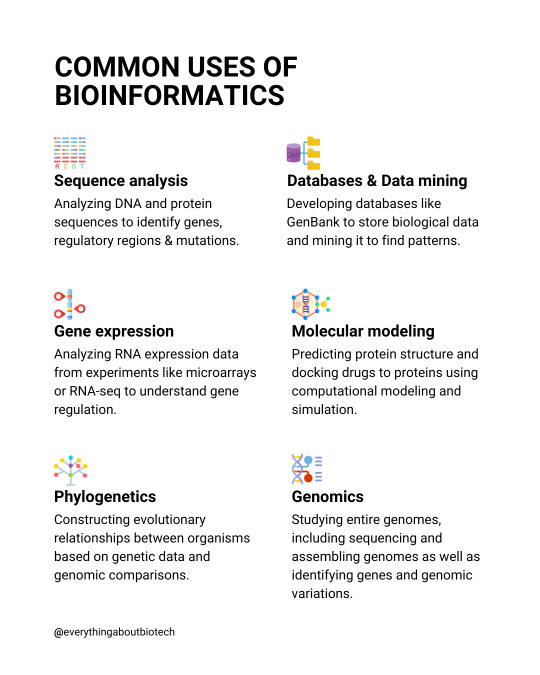
Common uses of bioinformatics
💡Sequence analysis Analyzing DNA and protein sequences to identify genes, regulatory regions & mutations.
💡Gene expression Analyzing RNA expression data from experiments like microarrays or RNA-seq to understand gene regulation.
💡Phylogenetics Constructing evolutionary relationships between organisms based on genetic data and genomic comparisons.
💡Molecular modeling Predicting protein structure and docking drugs to proteins using computational modeling and simulation.
💡Databases & Data mining Developing databases like GenBank to store biological data and mining it to find patterns.
💡Genomics Studying entire genomes, including sequencing and assembling genomes as well as identifying genes and genomic variations.
Follow @everythingaboutbiotech for useful posts.
#bioinformatics#genomics#proteomics#sequencing#PCR#biodata#bioIT#precisionmedicine#digitalhealth#biotech#DNA#healthtech#medtech#biostatistics#bioinformaticsjobs#BLAST#microarray#GenBank
53 notes
·
View notes
Text

In a world filled with big-name players in the smart wearables industry, TikTik Global LLP is an up-and-coming bootstrapped startup poised to change the game with its highly anticipated Aether X smartwatch, launching this December. TikTik Global LLP has leveraged its startup culture and local manufacturing approach to bring advanced, AI-driven smartwatches that blend functionality with fashion, offering a unique, user-focused experience that rivals any global tech leader.
Innovating with TikTik AI and Infinity OS
At the core of TikTik’s groundbreaking wearable is TikTik AI, an intelligent system that sets the Aether X apart with unique features tailored for a more intuitive user experience. Built on the company’s proprietary Infinity OS, this AI-enhanced operating system transforms the Aether X into more than just a smartwatch; it’s a lifestyle tool that integrates seamlessly into daily life. Users can expect fast and responsive real-time notifications, push alerts, and an intuitive user interface that adapts based on usage. The Aether X not only supports essential smartphone connectivity but also boasts an array of exclusive wellness and fitness features designed for everyone, from health-conscious individuals to fitness enthusiasts.
A Lifestyle-First Approach with Customizable Design
TikTik Global LLP aims to make smartwatches accessible, stylish, and suitable for every occasion. The Aether X is designed as a unisex lifestyle accessory with a variety of interchangeable options, including premium leather, durable silicon, and sleek metallic straps. The patented, sophisticated watch design and color-customizable crown allow users to personalize their style for any setting—whether it’s a gym session, formal meeting, or casual outing.
Advanced Health and Fitness Tracking
What truly sets Aether X apart from other smartwatches in its category is its advanced health and fitness tracking capabilities. Equipped with top-tier features like VO2 max monitoring, MET score tracking, and SpO2 levels, the Aether X enables users to maintain comprehensive health insights at their fingertips. Additionally, TikTik’s Health Tricycle provides an overview of daily fitness progress, including steps taken, calories burned, and active duration, allowing users to set achievable goals and stay motivated.
Other innovative metrics include sleep and stress analysis to monitor physical and mental health, as well as waist-to-hip ratio, cadence, and stride length for a holistic view of one’s health profile. These analytics, combined with the intuitive TikTik AI, empower users to understand and improve their overall well-being.
A Commitment to Make in India and Accessible Pricing
Aligned with the Make in India initiative, TikTik Global LLP champions local manufacturing, ensuring every aspect of the Aether X is crafted with high standards and optimized for the Indian consumer. In a market where most smartwatches are produced abroad, TikTik stands out by leveraging local resources, which not only supports the national economy but also allows for superior quality control and customization.
TikTik Global LLP’s bootstrapped approach means it’s committed to affordability and accessibility without compromising quality. With pricing structured around Purchasing Power Parity (PPP), the Aether X is set to provide cutting-edge technology at a price point that meets the Indian market’s needs—making high-tech, feature-rich smartwatches available to a wider demographic.
A December Launch: Shaping the Future of Smart Wearables
With its December launch around the corner, TikTik Global LLP’s Aether X is more than a smartwatch; it’s a revolution in wearable tech. As a bootstrapped startup, TikTik has overcome resource constraints through innovation, local partnerships, and a user-first design approach. This launch promises to not only introduce a new product to the market but also set a new standard for Indian-made wearables.
TikTik Global LLP’s mission to deliver affordable, high-quality smartwatches that cater to diverse lifestyles is a testament to the power of innovation and determination. As the December release date approaches, Aether X is expected to capture the interest of consumers and industry experts alike, placing TikTik Global LLP on the map as a formidable player in the wearables market.
#AetherX#PoweredByTikTik#TikTikSmartwatch#TikTikAI#InfinityOS#Smartwearable#MakeInIndia#BootstrappedStartup#TikTikGlobal#WearableInnovation#TechForIndia#HealthTracking#VO2Max#SmartFitness#FitnessWearable#UnisexSmartwatch#LifestyleWearable#IndiaTech#WearableAI#SmartwatchFashion#AffordableLuxury#MadeForIndia#ActivityTracker#HealthTech#InnovationInIndia#InfinityStore#TikTikGlobalLLP#AetherXSmartwatch#DigitalHealth#HealthMetrics
2 notes
·
View notes
Text
About Lifespark Technologies

Lifespark Technologies creates solutions for care in chronic neurological conditions such as Stroke, Parkinson's Disease . We are based at the Indian Institute of Technology - Bombay, India. Our solutions are designed for individuals, caregivers and the entire family; because these conditions don't just affect the lives of individuals.
Our solutions span the domains of AI/ML, medical devices, mobile applications and web applications. Lifespark Technologies aims to create the basic intelligence that will one day solve health issues at the earliest stage before they have damaging results. One day, a 60-year-old will look like today's 30-year-old.
Lifespark Technologies is among the top health-tech startups in the country and count many prominent business leaders and academics as our mentors. We have deployed our solutions in partnership with some of the largest healthcare organizations in India and are looking to establish ourselves as the go-to innovator globally.
Our Core Team Members :
CEO & Founder - Amey Desai

He has research experience in Machine Learning, Electronics, AI and their application in healthcare .
Research Head - Dr. Devendra Desai
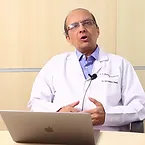
Dr. Desai heads the research team at Lifespark. With extensive experience in research and over a hundred publications, Dr. Desai's skills and medical acumen are instrumental to the research at Lifespark .
Chief Scientific Advisor & Mentor - Dr. Samit Chakrabarty
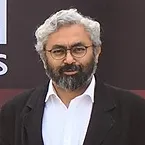
Dr. Chakrabarty is our chief scientific advisor and mentor. His expertise in Neurophysiology and multidisciplinary research provide deep and meaningful insights into the research at Lifespark .
Our Partners :


Awards and Recognition :
Shark Tank Season 3
youtube
Times of India
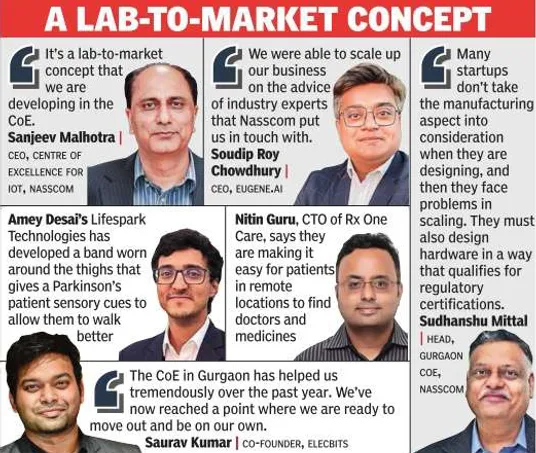
Prosus SICA Award 3rd place Winner

National Bio Entrepreneurship Competition Winner

#ParkinsonsDisease#ParkinsonsCare#NeurologicalDisorders#NeuroRehabilitation#MovementDisorders#ParkinsonsAwareness#StrokeRecovery#ParkinsonsSupport#ParkinsonsResearch#PDWarriors#CareForParkinsons#WalkDevice#LifesparkTechnologies#HealthTech#NeuroCare#ChronicCareSolutions#InnovationInHealthcare#MedicalDevices#FutureOfHealth#IITBombay#IndianStartups#HealthcareInnovation#CaregiverSupport#DigitalHealth#Youtube
3 notes
·
View notes
Text
From Wait Times to Wellness:
Transforming OPD Visits with hashtag#SelfServiceKiosks
Transform the patient experience and cut wait times with Achala Health Services Private Limited's self-service kiosks. With over 50+ kiosks installed across Hyderabad hospitals, we're revolutionizing patient care and boosting operational efficiency.
🔹 Front office staff efficiency is up by 10-15% 🔹 Over 50% of new patients register via kiosks 🔹 Wait times slashed by 80% (45 minutes to 9 minutes) 🔹 85%+ of patients use kiosks to collect reports 🔹 Report collection wait times cut from 25 minutes to under 5 minutes 🔹 Nurse administrative workload reduced by 20-30% 🔹 Manual processes & errors eliminated by 25-40%
Join us in enhancing healthcare with innovative solutions! https://lnkd.in/geQ54BMy





#HealthcareInnovation#OperationalEfficiency#PatientExperience#SelfServiceKiosks#AchalaHealth#HealthcareTechnology#PatientCare#HospitalInnovation#DigitalHealth#HealthTech#MedicalInnovation#PatientFlow#OPDManagement#EfficiencyInHealthcare#HealthcareTransformation#SelfCheckIn#HospitalEfficiency#HealthCareAutomation#SmartHospitals#PatientSatisfaction
2 notes
·
View notes
Text
Analysis of: "From Brain to AI and Back" (academic lecture by Ambuj Singh)
youtube
The term "document" in the following text refers to the video's subtitles.
Here is a summary of the key discussions:
The document describes advances in using brain signal recordings (fMRI) and machine learning to reconstruct images viewed by subjects.
Challenges include sparseness of data due to difficulties and costs of collecting extensive neural recordings from many subjects.
Researchers are working to develop robust models that can generalize reconstruction capabilities to new subjects with less extensive training data.
Applications in medical diagnosis and lie detection are possibilities, but risks of misuse and overpromising on capabilities must be carefully considered.
The genre of the document is an academic lecture presenting cutting-edge neuroscience and AI research progress to an informed audience.
Technical content is clearly explained at an advanced level with representative examples and discussion of challenges.
Ethical implications around informed consent, privacy, and dual-use concerns are acknowledged without overstating current capabilities.
While more information is needed, the presentation style and framing of topics skews towards empirical science over opinion or fiction.
A wide range of stakeholders stand to be impacted, so responsible development and governance of emerging neural technologies should involve multidisciplinary input.
Advancing both basic scientific understanding and more human-like machine learning is a long-term motivation driving continued innovation in this important field.
Here is a summary of the key points from the document:
The speaker discusses advances in using brain signal recordings (fMRI) to reconstruct images that a person is viewing by training AI/machine learning models.
An example is shown where the top row is the actual image viewed and the bottom row is the image reconstructed from the person's brain signals.
Larger datasets with brain recordings from multiple subjects are allowing better models to be developed that may generalize to new subjects.
Challenges include the sparseness of brain signal data due to the difficulty and costs of collecting it from many subjects.
A model is presented that maps brain signals to a joint embedding space of images and text, allowing reconstruction of novel images from new brain signals.
Examples are shown where the reconstructed images match fairly well or not as well depending on image details and semantics.
Issues around ethics, risks of misuse, and questions of explaining and improving the models are discussed.
Ongoing work aims to address challenges around transferring models between subjects and measuring reconstruction performance.
Based on the content and style of the document, it appears to be an academic lecture or presentation.
Key evidence points include:
The document consists primarily of a speaker talking and presenting slides/examples to an audience, as indicated by phrases like "Let me just start with this" and an applause at the end.
Technical topics from neuroscience and machine learning/AI are discussed in detail, such as fMRI brain recordings, reconstructing images from brain signals, modeling approaches, dataset descriptions, and challenges/questions in the field.
Academic concepts like human subjects studies, building models, transferring learning, and measuring performance are referred to.
The presentation of information is intended to educate the audience on the state of the field and cuttting edge research, not just entertain.
There are no narratives, characters or creative storytelling elements - it adheres strictly to explaining complex technical content.
Therefore, based on the instructive/educational style and focus on explaining advanced technical research, I would classify the genre of this document as an academic lecture/presentation intended to inform an audience about progress in the domain of neuroscience and artificial intelligence.
Here are some of the key stakeholders that could be affected by the content and topics discussed in this document:
Neuroscience researchers - Directly interested and impacted by advances reported from their field of study. Progress informs future research directions.
AI/machine learning researchers - Models and challenges discussed could inspire new research at the intersection of AI and neuroscience. Transfer of model techniques.
Medical/clinical communities - Potential applications to diagnosis, personalized medicine if models can accurately reconstruct brain states. Raises ethical issues.
Government research agencies - Fund future related research based on understanding of opportunities and challenges conveyed. Evaluates societal impacts.
General public - Increased understanding of science helps engagement but topics like brain reading raise public concerns around privacy, consent if translated beyond research.
Research participants - Summary does not disclose identities but motivates others to contribute data for progress. Well-being depends on responsible use of data.
Technology companies - Commercial opportunities from real-world applications but also reputational risks if misused. Data ownership questions.
Academic institutions - Collaborations, education of next generations of researchers on cutting-edge topics is enabled through open dissemination of knowledge.
Overall the document provides value to a wide range of stakeholders by communicating the state and potential implications of this multidisciplinary area of neuroscience and AI research. Responsible stewardship is important given several ethical considerations.
Here is a summary of the key points about advances in using brain signal recordings from the document:
Researchers are using fMRI to record brain signals as people view images, in order to reconstruct the viewed images from the brain activity patterns alone.
Machine learning models, especially neural networks, are allowing researchers to train mappings from brain signals to representations of semantic content like images and text.
Examples show the capability of reconstructing fairly accurate images that a person viewed, based solely on their brain activity recordings during viewing.
Larger datasets with multiple subjects are important to develop models that may generalize beyond individual subjects. However, fMRI data is very difficult and expensive to collect at scale.
Advances now allow reconstruction of more complex stimuli like full stories a person reads, not just static images.
Ongoing work aims to better understand brain learning processes and apply those principles to more human-like machine learning architectures.
Analyzing brain recordings also has potential applications for medical diagnosis, lie detection, personalized medicine as models improve.
Ethics must be carefully considered to ensure technologies for reading neural signals are developed and applied responsibly and avoid misuse or privacy violations.
So in summary, the document outlines significant progress using machine learning on brain recordings to reconstruct sensory experiences, with applications and open questions that can further both neuroscience and AI.
Here is a summary of the key points about the sparseness of brain signal data:
Collecting fMRI brain signal recordings from large numbers of subjects is extremely challenging and costly due to the resources and time required.
Each recording session with a single subject takes considerable time, as the number of images/stimuli that can be presented is limited within a session.
Collecting data from a single subject sufficient for training complex models may require recording sessions over multiple days or weeks.
As a result, publicly available datasets typically contain recordings from only a small number of subjects, often under 10.
The sparseness of data makes it difficult to develop robust models that will generalize well to new subjects that lack extensive recordings.
Researchers aim to better leverage smaller datasets by training models that can reconstruct novel stimuli from just a subset of training data per subject.
If successful, this could enable more efficient data collection, such as obtaining usable models from a subject after a single shorter session rather than many long sessions.
However, overcoming the sparseness of brain signal data remains a major challenge holding back progress in the field. Larger collaborative datasets are needed.
So in summary, sparse data severely limits progress but also motivates techniques to optimize learning from limited samples per subject.
Here is a summary of key points regarding risks of misuse from the document:
Advances in reconstructing cognitive states like images viewed from brain recordings raise potential dual-use concerns if technologies are not regulated.
Applications in medical diagnosis and lie detection could help many, but lead to issues if used without consent or for non-medical surveillance.
Overly ambitious claims about capabilities need to be avoided to prevent misleading expectations that could fuel inappropriate usage assumptions.
Privacy and security of sensitive neural data must be prioritized to prevent potential misuse for profiling, identification or manipulation without oversight.
Commercial pressures may incentivize premature deployment before understanding implications, so continued research is important.
Public education about limitations and complexities involved can help curb fears that fuel misuse if capabilities are overestimated.
Multidisciplinary cooperation ensures societal and ethical issues are considered proactively rather than reactively addressed later.
Governance frameworks may be needed to steer applications toward public benefit rather individual or state abuse of personal mental information.
The speaker acknowledges misuse risks to inform discussion and underscore the importance of ongoing examination of new neural technologies through multidisciplinary lens including ethics.
Based on the content and style of presentation, my evaluation of the document status is:
Science vs Fiction: Clearly grounded in science as it discusses ongoing empirical research studies using neuroimaging and machine learning techniques. No fictional or hypothetical elements.
Empirical vs Anecdotal: Empirical in nature, rooted in dataset collection from human subjects and quantitative modeling/evaluation, not personal experience. While data quantities are limited, research follows scientific method.
Fact vs Opinion: Primarily presents technical details and research findings as established facts from the literature. Does not advance strong personal opinions beyond realistic discussion of challenges. Maintains an objective tone.
Objective vs Subjective: Remains objective in explaining research accomplishments and questions objectively without emotive language or bias. Any subjective experience like dataset limitations are clearly labeled as such. Presentation aims for factual information transfer.
In summary, while farther research is still ongoing, the document presents the current state of a scientific research domain factually based on empirical evidence and quantitative analysis published in the field. It does not intermingle non-factual elements or stray from an objective reporting of the topic at hand. The status therefore skews heavily toward science, empiricism, fact and objectivity.
I did not identify any logical fallacies in the content or arguments presented in this document.
The speaker objectively summarizes established research results and proposals, without making assertions that require logical scrutiny.
Some key reasons why logical fallacies are not present include:
No causal claims are made without proper evidence or empirical support from published studies. Progress is tied to concrete research efforts.
No arguments are constructed through flawed reasoning or non sequiturs. Concepts are explained clearly and build upon each other logically.
Comparisons to other approaches are fair without strawman misrepresentations of opposing ideas. Related work is acknowledged.
Limitations and open challenges are candidly outlined rather than ignored or obscured through fallacious defense.
No emotional, exaggerated or politically motivated language is used that could constitute emotional appeals. Tone remains factual.
No false dilemmas or false attributions of complexity are presented. Discussions appropriately scope multi-factor research questions.
No hasty generalizations are made from limited evidence. Data constraints are clearly communicated.
Overall, through objectively summarizing established neuroscience and AI research domains and techniques, without engaging in argument or debate, I did not find any logical fallacies employed in this academic information-sharing document. The focus appears to be factual reporting of progress and issues, avoiding fallacious reasoning.
Here is an evaluation of the ethics addressed and considered in the document:
Informed consent is implied but not explicitly discussed for research participants. Given the sensitivity of brain data, proper protocols were likely followed.
Privacy and anonymity of participants is a concern, but cannot be fully assessed without more details on the dataset and review process.
Potential dual-use issues around brain reading/reconstruction technologies are identifed by discussing applications but also worries about misuse or lack of oversight. This shows awareness of ethical implications.
Limitations and challenges and openly discussed, avoiding overpromising on capabilities. This establishes credibility and sets appropriate expectations.
Societal impacts and usage beyond research (e.g. diagnostics) are flagged as requiring careful consideration of risks like surveillance, discrimination if not regulated properly.
No claims are made without empirical evidence, showing results are driven by facts rather than desires which can bias judgment. Objectivity helps ethical analysis.
Multidisciplinary collaboration is emphasized , suggesting diverse viewpoints were incorporated into the research process.
Overall, while full review details are not provided, the document demonstrates an awareness of important ethical considerations around privacy, consent and responsible development for these sensitive types of neural data and technologies. A balanced assessment of opportunities and risks is conveyed.
Here are the usual evaluation criteria for an academic lecture/presentation genre and my evaluation of this document based on each criteria:
Clarity of explanation: The concepts and technical details are explained clearly without jargon. Examples enhance understanding. Overall the content is presented in a clear, logical manner.
Depth of technical knowledge: The speaker demonstrates thorough expertise and up-to-date knowledge of the neuroscience and AI topics discussed, including datasets, modeling approaches, challenges and future directions.
Organization of information: The presentation flows in a logical sequence, with intro/overview, detailed examples, related work, challenges/future work. Concepts build upon each other well.
Engagement of audience: While an oral delivery is missing, the document seeks to engage the audience through rhetorical questions, previews/reviews of upcoming points. Visuals would enhance engagement if available.
Persuasiveness of argument: A compelling case is made for the value and progress of this important multidisciplinary research area. Challenges are realistically discussed alongside accomplishments.
Timeliness and relevance: This is a cutting-edge topic at the forefront of neuroscience and AI. Advances have clear implications for the fields and wider society.
Overall, based on the evaluation criteria for an academic lecture, this document demonstrates strong technical expertise, clear explanations, logical organization and timely relevance to communicate progress in the domain effectively to an informed audience. Some engagement could be further enhanced with accompanying visual/oral presentation.
mjsMlb20fS2YW1b9lqnN
#Neuroscience#Brainimaging#Neurotechnology#FMRI#Neuroethics#BrainComputerInterfaces#AIethics#MachineLearning#NeuralNetworks#DeepLearning#DataPrivacy#InformationSecurity#DigitalHealth#MentalHealth#Diagnostics#PersonalizedMedicine#DualUseTech#ResearchEthics#ScienceCommunication#Interdisciplinary#Policymaking#Regulation#ResponsibleInnovation#Healthcare#Education#InformedConsent#Youtube
2 notes
·
View notes
Text
2 notes
·
View notes
Text

Call for Abstracts – Track 8: Change Management in Healthcare 17th International Healthcare, Nursing and Hospital Management Conference December 17–19, 2025 | Dubai, UAE & Virtual Submit your research on effective change management strategies in healthcare. Explore how leadership, communication, staff engagement, policy updates, and technological integration drive successful transformation in healthcare settings. Abstract Submission Deadline: May 31, 2025 Submit your abstract: https://healthcare.utilitarianconferences.com/submit-abstract WhatsApp us: https://wa.me/+971551792927
#Healthcare#ChangeManagement#HealthcareLeadership#HealthInnovation#PatientCare#HospitalManagement#HealthcareConference#NursingLeadership#HealthTransformation#PolicyAndPractice#OrganizationalChange#DigitalHealth#GlobalHealthCare#HealthcareStrategy#ChangeInHealthcare#HealthcareExcellence
0 notes
Text
Segmed's De-Identified, Real-World Imaging Data is Part of Bayer’s AI Innovation Platform
🎉 Exciting to see #BayerInRadiology Bayer | Pharmaceuticals launching #Centafore Imaging Core Lab — a major leap forward for imaging-driven clinical research and AI innovation in radiology! We’re proud that Segmed’s de-identified, real-world imaging data is part of Bayer’s AI Innovation Platform, helping accelerate the development and validation of AI solutions for healthcare. Together with Bayer, we’re shaping a future where data-driven, patient-centric innovation powers smarter diagnostics and better outcomes.
Congratulations to the Bayer team on this impactful initiative — we’re thrilled to be on this journey with you! 🚀
#AIinHealthcare#RadiologyAI#DigitalHealth#ClinicalResearch#MedicalImaging#DataForGood#HealthcareInnovation#TeamSegmed
0 notes
Text

🏥 Transform Healthcare with a Custom App 📱 Your patients deserve better care. You deserve smarter tools. From virtual consultations to health tracking and secure medical records—we build HIPAA-compliant healthcare apps that make a difference. 🔹 Telemedicine Solutions 🔹 Patient Portals 🔹 Remote Monitoring 🔹 EHR/EMR Integration 🔹 Fitness & Wellness Apps 💡 Tailored for clinics, hospitals, and health startups 🛡 100% secure & compliant (HIPAA/GDPR) 📈 Scalable. Reliable. Easy to use. 📩 DM us to schedule a free consultation! Email: [email protected] Mobile: +91 989 110 7522 website: https://webapphealing.com/
#HealthTech#HealthcareApp#Telemedicine#HealthCareInnovation#HIPAACompliance#MedTech#AppDevelopment#DigitalHealth#StartupHealth#ondemandapp#webapphealing#mobileappdevelopment#USA#germany#UK#doctor#clinic
0 notes
Text
The Rise of At-Home Medical Test: Why It’s the Future of Healthcare

In recent years, healthcare has undergone a major transformation, and one of the most impactful innovations has been the at-home medical test. From COVID-19 testing to full-body checkups, more people are now opting for the convenience and safety of at-home medical tests rather than visiting a hospital or clinic. This shift not only empowers patients but also plays a crucial role in early diagnosis and preventive care.
What Is an At-Home Medical Test?
An at-home medical test allows individuals to collect samples such as blood, urine, or saliva from the comfort of their home. These samples are then sent to certified labs for analysis. The results are typically delivered digitally within 24 to 72 hours. This hassle-free approach eliminates the need for long queues, travel, or hospital exposure, making healthcare more accessible than ever.
Why the Surge in At-Home Medical Test Demand?
There are multiple reasons behind the rising popularity of the at-home medical test:
Convenience: People can schedule a sample collection according to their availability.
Privacy: Health concerns can be addressed discreetly, especially for sensitive tests.
Safety: Reduces exposure to infections, particularly in the wake of the COVID-19 pandemic.
Affordability: Competitive pricing and bundled test packages make at-home medical tests cost-effective.
Common Types of At-Home Medical Tests
Today, there is a wide range of at-home medical test options available, including:
Blood sugar and diabetes tests
Cholesterol and lipid profile tests
Liver and kidney function tests
Thyroid testing
Vitamin and mineral deficiency tests
COVID-19 antigen and antibody tests
Fertility and hormone tests
Each at-home medical test is designed to be user-friendly and reliable, providing accurate insights into your health status.
Who Should Consider At-Home Medical Tests?
The at-home medical test is suitable for a wide range of people:
Busy professionals who find it difficult to visit clinics
Elderly patients or those with limited mobility
Immunocompromised individuals looking to avoid public spaces
Anyone interested in routine health monitoring from home
The Future of Healthcare is Home-Based
The healthcare industry is rapidly adopting at-home medical test services as part of its digital evolution. With rising demand, platforms like SwasthyaPro are leading the way by offering NABL and CAP certified testing with home sample collection and fast, accurate results. This ensures users get the same quality assurance as in top hospitals—without stepping out.
Conclusion
The at-home medical test is more than just a trend—it’s a paradigm shift in how healthcare is delivered. By bringing diagnostic services to your doorstep, it puts your health in your hands, enabling quicker action, better monitoring, and long-term wellness.
If you haven’t tried an at-home medical test yet, now is the perfect time to take control of your health—one test at a time.
#AtHomeMedicalTest#HomeHealthCare#HealthMonitoring#PreventiveHealth#MedicalDiagnostics#DigitalHealth#HomeLabTests#RemoteTesting#Telemedicine#SmartHealthcare#COVIDTesting#FullBodyCheckup#ModernHealthcare#HealthTech#WellnessAtHome#HealthcareInnovation#EasyHealthTests#SelfCareHealth#DiagnosticServices#FutureOfHealthcare
0 notes
Text
Data Chaos or Compliance? How HealthTech Startups Can Future-Proof Data Governance from Day One
For HealthTech startups, data is both their greatest asset and their biggest risk. Without a scalable data governance framework, early momentum can quickly turn into regulatory headaches and trust issues. This blog breaks down how to embed smart, sustainable data practices from day one—before chaos takes root. From compliance readiness to investor confidence, find out why governance isn't just for enterprises anymore.
#HealthTech#DataGovernance#Startups#HealthData#DigitalHealth#HIPAA#GDPR#StartupStrategy#ComplianceByDesign#ScalableTech
0 notes
Text
Wellness Apps Market Is Anticipated to Witness Growth Owing to Health Awareness

The Wellness Apps Market encompasses a diverse portfolio of mobile and web-based applications designed to promote holistic health, fitness tracking, mental well-being, nutrition management, and lifestyle coaching. These digital solutions offer advantages such as personalized goal setting, real-time progress feedback, AI-driven recommendations, and social integration for community support.
By leveraging sensors, wearable integrations, and data analytics, Wellness Apps Market Demand enable users to monitor physical activity, meditate, manage stress, and maintain balanced diets—all from a single platform. The growing demand for remote healthcare delivery and preventive care has fueled rapid market growth, as consumers and healthcare providers seek cost-effective and scalable tools to tackle chronic diseases and mental health challenges.
Ongoing advances in market research and emerging market trends—such as gamification, virtual reality workouts, and adaptive learning algorithms—are expanding the market scope and creating new revenue streams for market companies. Comprehensive market insights indicate that as smartphone penetration rises and cloud-based services mature, wellness apps will play a key role in driving business growth and enhancing overall well-being.
Get More Insights On- Wellness Apps Market
#DigitalHealth#HealthTech#WellnessApps#WellnessAppsMarket#WellnessAppsMarketTrends#WellnessAppsMarketInsights#CoherentMarketInsights
0 notes
Text
Smarter Healthcare Starts Here: How Digital Tools Are Changing the Way We Stay Well

Let’s face it—navigating healthcare can feel overwhelming. Between doctor appointments, prescriptions, test results, and trying to just feel better, it’s easy to get lost in the shuffle.
But what if healthcare could be simpler, smarter, and even more personal?
That’s exactly where Healthanza steps in—your all-in-one digital health companion that puts your wellness in your hands.
From Sick Care to Self-Care
For decades, healthcare has mostly been reactive—something we turn to after we get sick. But the world is changing fast. Today’s leading health platforms, like Healthanza, are helping people shift from sick care to self-care. Here’s how:
📱 Track your health with daily check-ins and real-time insights
💊 Never miss a dose with medication and appointment reminders
💬 Talk to doctors from anywhere with built-in telehealth tools
🧠 Get personalized health tips to prevent problems before they start
With Healthanza, you don’t have to wait until something’s wrong. You can take small, smart steps every day—right from your phone.
👉 Visit Healthanza Now
A Doctor’s Perspective: Dr. Naveen Solanki Weighs In
If anyone understands the power of tech in healthcare, it’s Dr. Naveen Solanki—a respected physician and advocate for digital health transformation. His passion? Making healthcare more human, even in a digital world.
“When you put the right tools in the hands of patients, they feel seen, supported, and empowered. That’s what platforms like Healthanza do,” says Dr. Solanki.
He’s not just talking about convenience—he’s talking about real, lasting change. Improved outcomes. Better communication. And most of all, healthcare that fits your life, not the other way around.
👉 Book an Appointment with Dr. Naveen Solanki
The Bottom Line: Your Health, Your Way
Whether you're managing a chronic condition, aiming to stay fit, or just trying to keep track of your health, Healthanza gives you the confidence and clarity to do it right. It’s health—on your terms.
And with medical leaders like Dr. Naveen Solanki championing smarter, tech-driven solutions, the future of healthcare looks brighter than ever.
💡 Ready to take control of your health?
✅ Explore Healthanza ✅ Schedule a Consultation with Dr. Solanki
#healthcare#healthanza#health#HealthcareRevolution#DigitalHealth#SmartWellness#HealthManagement#PatientEmpowerment#PreventiveCare
0 notes
Text

AR & VR are transforming mental health care by making therapy more immersive, accessible, and effective than ever before. From virtual reality exposure therapy to augmented reality mindfulness, these technologies are breaking barriers and changing lives. Discover how the future of healing is unfolding today. 🧠✨
Dive deeper here: 👉 https://webelight.com/blog/how-ar-vr-is-revolutionizing-mental-health-treatment-in-2025
#HowARVRIsRevolutionizingMentalHealthTreatmentIn2025#MentalHealthTech#ARVR#VirtualTherapy#DigitalHealth#WebelightSolutions
0 notes
Text

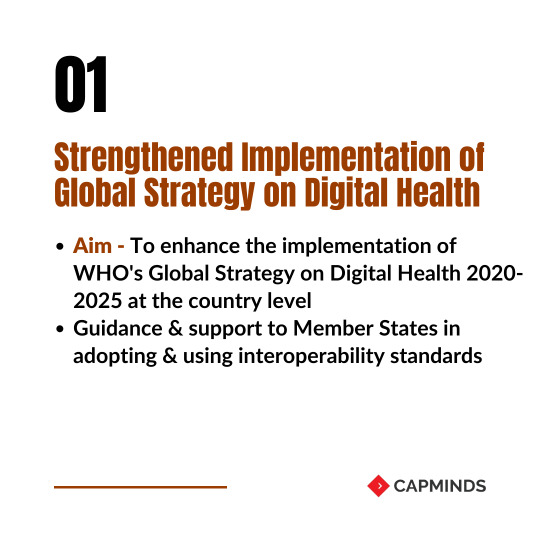

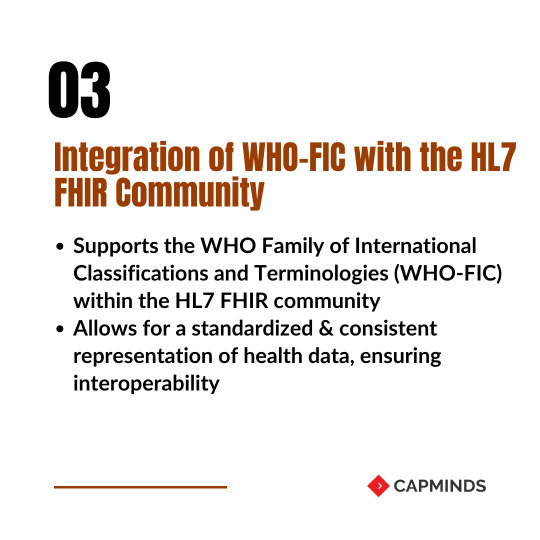
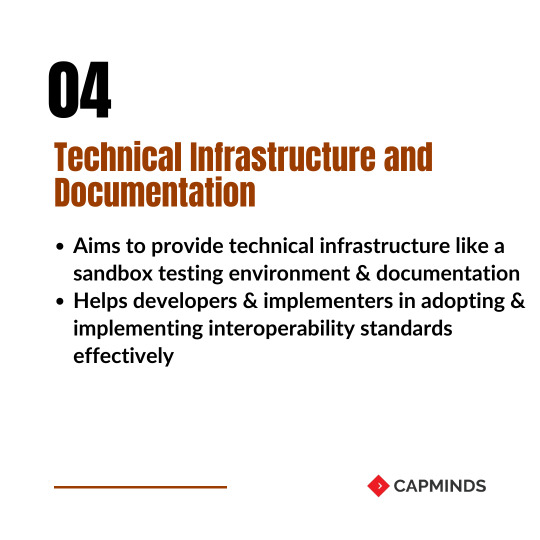
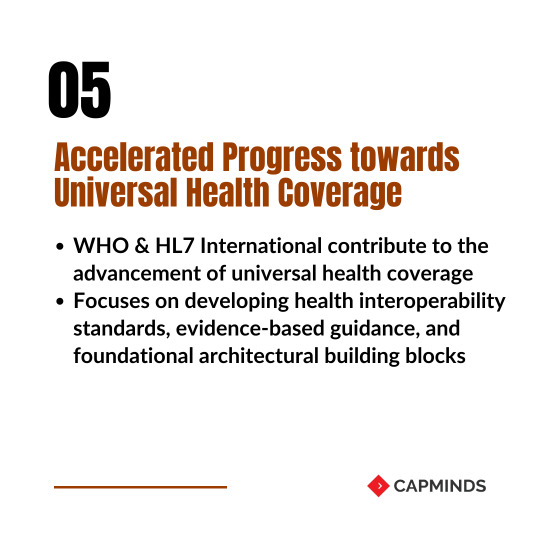
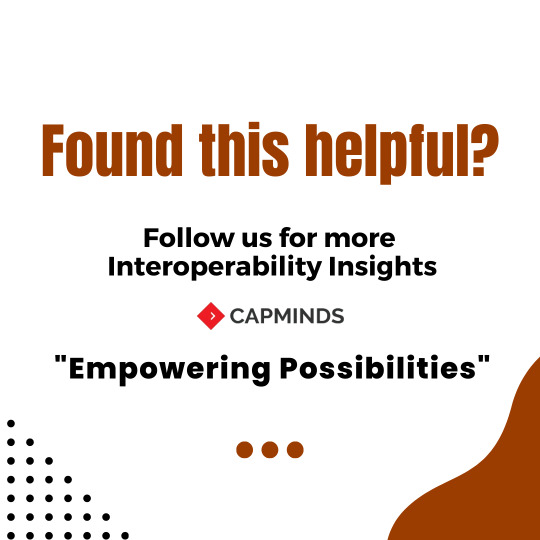
The collaboration between WHO and HL7 International brings together their respective expertise and resources to drive the adoption and appropriate use of interoperability standards globally.
This collaboration has the potential to harmonize digital health systems, improve data exchange and continuity of care, and contribute to the overall goal of achieving universal health coverage.
2 notes
·
View notes